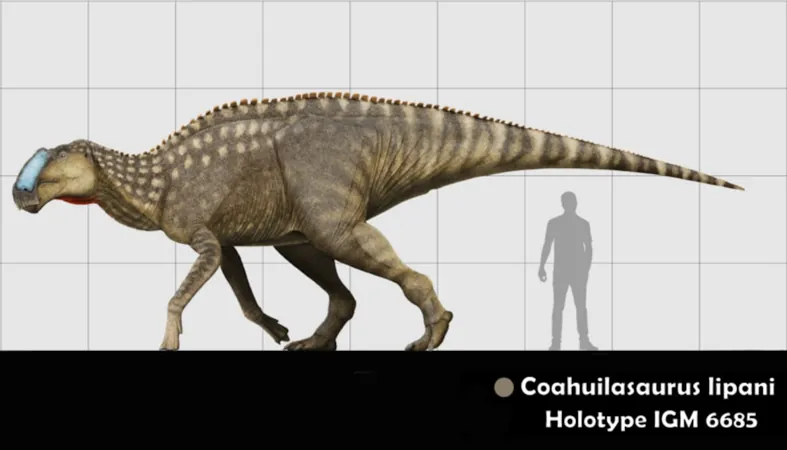
New Dinosaur Species Discovered in Northern Mexico: Meet the Coahuilasaurus lipani!
2024-10-08
Author: Ming
New Dinosaur Species Discovered in Northern Mexico: Meet the Coahuilasaurus lipani!
In an exciting revelation for paleontology, a new dinosaur species has recently been identified in Coahuila, northern Mexico, broadening our understanding of the diverse prehistoric life once thriving in this region. Named *Coahuilasaurus lipani*, this herbivore lived around 72 million years ago, just before the catastrophic extinction event that ended the reign of the dinosaurs. Members of the hadrosaurid family, commonly dubbed "duckbills," *Coahuilasaurus lipani* measured approximately eight meters in length and moved gracefully on four legs.
Remarkably, the fossilized remains of *Coahuilasaurus lipani*, including a skull and jaws, had been mislabeled for decades. Initially classified as fossils of *Kritosaurus*, a genus familiar to paleontologists and associated with the southern United States, these remains were reexamined by a collaborative international team of scientists including experts from Mexico, the UK, and the US. Their thorough analysis revealed significant differences, prompting the researchers to declare the specimen as a new species.
Claudia Serrano Brañas, a Mexican paleontologist who is a co-author of the study published in September 2024, shared insights on this monumental find. “There were many questions about the skull, and during our analysis, we realized it was distinct from *Kritosaurus.* It was time to recognize that this was a unique dinosaur,” Serrano explained.
The discovery site, Cerro del Pueblo in Coahuila, is pivotal in understanding the area’s rich geological history. Researchers believe that 72 million years ago, the environment was a lush tropical landscape, a stark contrast to the arid terrain present today. This ancient ecosystem hosted a variety of primitive flora and fauna, creating an invaluable fossil record that sparked a renaissance in Mexican paleontology beginning in the mid-1990s.
What makes *Coahuilasaurus lipani* particularly remarkable is its uniquely adapted jaw and palate structure. Unlike other hadrosaurids in the area, the bony formations of its snout have a distinct conical shape, enabling it to feed on tough vegetation such as palm leaves. This adaptation suggests a specialized diet that correlated closely with the lush flora that once flourished in the region.
This discovery marks a significant milestone in reshaping the narrative about dinosaur diversity in North America. Historically, the understanding of dinosaur species was heavily centered around the extensive findings in the United States and Canada. “There used to be this misconception that the dinosaurs in Mexico would mirror those found in the north,” Serrano elaborated. “However, our ongoing research is unveiling a unique and diverse dinosaur fauna in Mexico that is markedly different, and we are beginning to question the earlier assumptions about North America’s prehistoric life.”
As we continue to unearth new fossils and study the geological past, the story of dinosaurs in Mexico is rapidly evolving, revealing a treasure trove of diversity that challenges long-held beliefs in the field of paleontology. The *Coahuilasaurus lipani* is just one piece of the larger puzzle, igniting further exploration and fascination with the fascinating world of dinosaurs.



 Brasil (PT)
Brasil (PT)
 Canada (EN)
Canada (EN)
 Chile (ES)
Chile (ES)
 España (ES)
España (ES)
 France (FR)
France (FR)
 Hong Kong (EN)
Hong Kong (EN)
 Italia (IT)
Italia (IT)
 日本 (JA)
日本 (JA)
 Magyarország (HU)
Magyarország (HU)
 Norge (NO)
Norge (NO)
 Polska (PL)
Polska (PL)
 Schweiz (DE)
Schweiz (DE)
 Singapore (EN)
Singapore (EN)
 Sverige (SV)
Sverige (SV)
 Suomi (FI)
Suomi (FI)
 Türkiye (TR)
Türkiye (TR)